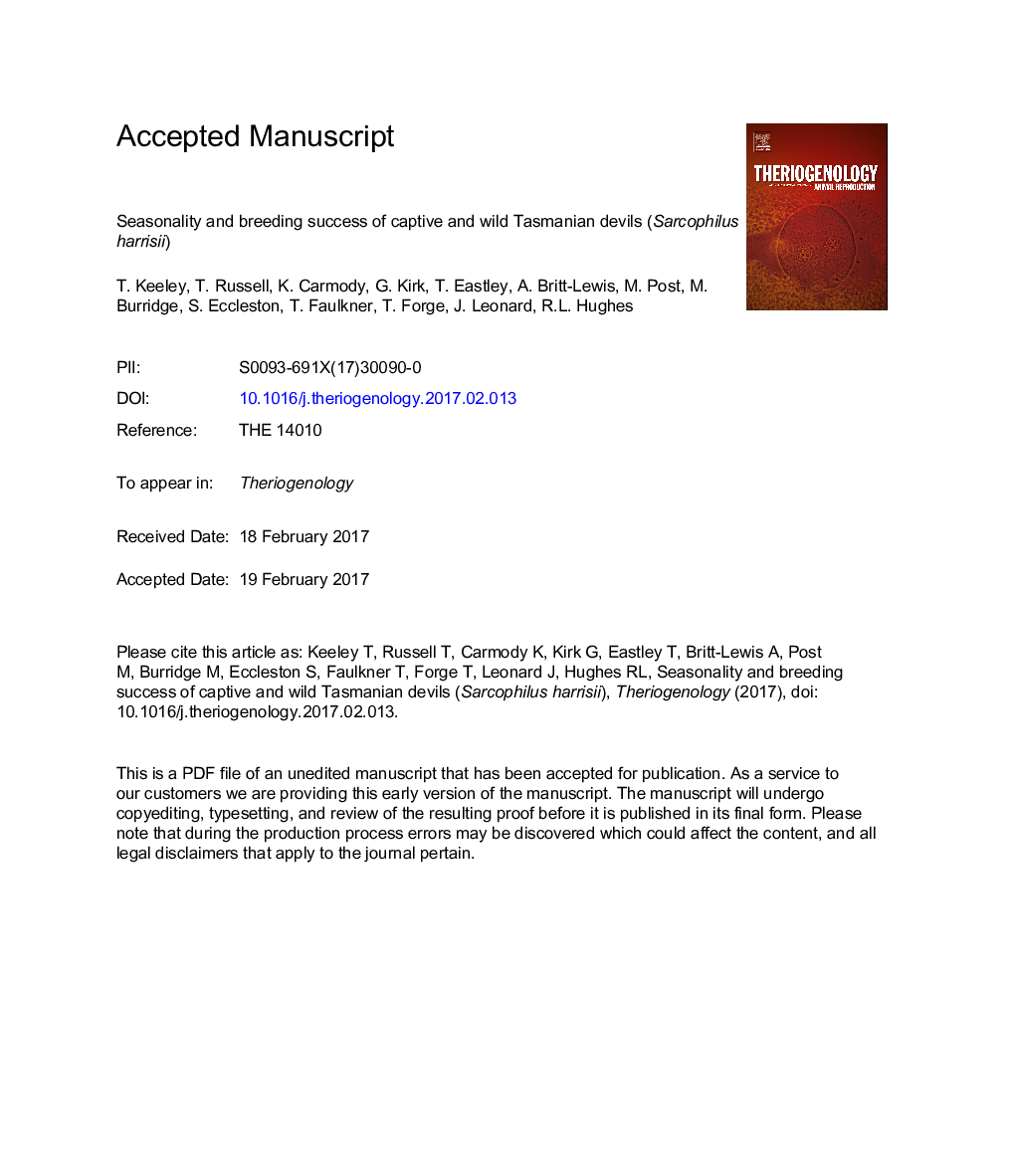| کد مقاله | کد نشریه | سال انتشار | مقاله انگلیسی | نسخه تمام متن |
|---|---|---|---|---|
| 5523369 | 1546074 | 2017 | 27 صفحه PDF | دانلود رایگان |
عنوان انگلیسی مقاله ISI
Seasonality and breeding success of captive and wild Tasmanian devils (Sarcophilus harrisii)
دانلود مقاله + سفارش ترجمه
دانلود مقاله ISI انگلیسی
رایگان برای ایرانیان
کلمات کلیدی
موضوعات مرتبط
علوم زیستی و بیوفناوری
علوم کشاورزی و بیولوژیک
علوم دامی و جانورشناسی
پیش نمایش صفحه اول مقاله

چکیده انگلیسی
The synchrony and timing of reproductive events are crucially important factors to maximize individual and offspring survival, especially in seasonal environments. To increase our understanding of the physiological basis of seasonality and the influence of associated environmental factors (maximum temperature, day length and rate of day length change associated with different latitudes) on reproduction in Tasmanian devils, we reviewed records and research data from captive facilities throughout Australia in comparison to those from a wild population study (1974-1987). Overall, breeding activity began 2 weeks earlier in the captive than the wild population (week 5.7 ± 0.6 versus week 7.7 ± 0.5 for devils entering into estrus during the first two week phase; n = 24 and n = 23 respectively). If the timing of reproductive activity is considered against absolute day length rather than date, both the captive and wild populations displayed similar distributions (12.9 ± 0.7 h versus 13.0 ± 0.7 h respectively; P < 0.01) confirming day length as a proximal cue involved in eliciting a physiological response to trigger seasonal reproductive activity regardless of location. Wild devils had a higher breeding success (75%; n = 169 versus 43%; n = 115) and larger litter size (3.4 ± 0.9 versus 2.8 ± 1.1 joeys per litter) than captive devils (P < 0.05). Mean maximum temperature at the onset of reproductive activity (P < 0.05) was higher for the captive than the wild population (28.1 ± 4.0 °C versus 22.3 ± 2.7 °C respectively). The drivers for reproductive success in captive Tasmanian devils are likely multifactorial, but our results suggest that elevated temperatures associated with shifts in breeding activity and geographical location should be examined further.
ناشر
Database: Elsevier - ScienceDirect (ساینس دایرکت)
Journal: Theriogenology - Volume 95, June 2017, Pages 33-41
Journal: Theriogenology - Volume 95, June 2017, Pages 33-41
نویسندگان
T. Keeley, T. Russell, K. Carmody, G. Kirk, T. Eastley, A. Britt-Lewis, M. Post, M. Burridge, S. Eccleston, T. Faulkner, T. Forge, J. Leonard, R.L. Hughes,